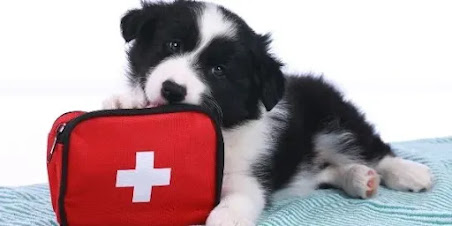As a dog owner, it is important to be prepared for any emergency situation that may arise. Knowing basic first aid for dogs can make a huge difference in the outcome of an emergency. In this article, we will discuss some important first aid tips for dogs that every dog owner should know.
Bleeding:
If your dog is bleeding, use a clean cloth or bandage to apply pressure to the wound. If the bleeding is severe and won't stop, call your vet immediately. Be sure to check for signs of shock such as pale gums, weakness, and rapid breathing. Keep your dog as still as possible to avoid worsening the bleeding. If possible, elevate the wound above the heart to reduce blood flow.
Burns:
If your dog has a burn, cool the area with cool water. Cover the burn with a clean, dry cloth, and contact your vet for further instructions. Do not apply any creams, ointments, or butter to the burn as it may cause further damage. Keep your dog as still as possible and avoid making them walk on the burn.
Choking:
If your dog is choking, try to clear the airway by performing the Heimlich maneuver, or by using your fingers to remove the obstruction. If this is unsuccessful, call your vet immediately. Check the dog's mouth and throat to see if the obstruction is visible, if so try to remove it with your fingers or with a pair of tweezers. If you can't remove the obstruction, perform the Heimlich maneuver by standing behind the dog and making a fist with one hand. Place the fist just below the dog's ribcage and give a sharp upward thrust.
Fractures:
If you suspect your dog has a fracture, keep them still and call your vet immediately. Do not try to move or treat the fracture yourself. If possible, use a makeshift splint to immobilize the limb. This can be done by using a rolled-up magazine or newspaper, or a piece of wood.
Heatstroke:
If you suspect your dog has heatstroke, move them to a cool place, wet them down with cool water, and contact your vet immediately. Heatstroke can be fatal if not treated quickly, so it's important to act fast. You can cool your dog down by using cool water to wet their fur, or by using a fan to blow cool air on them. Be sure to monitor your dog's temperature and breathing. If your dog's temperature is above 105°F or they are panting heavily, they are in heatstroke and need immediate attention.
Poisoning:
If you suspect your dog has been poisoned, contact your vet or the ASPCA Animal Poison Control Center immediately. Have the product packaging or a sample of the substance available when you call. Symptoms of poisoning can include vomiting, diarrhea, drooling, difficulty breathing, and seizures. Be prepared to give the poison control center information about your dog's breed, weight, and any symptoms they are experiencing.
Seizures:
If your dog is having a seizure, stay calm and keep them safe by moving any nearby objects out of the way. Do not try to open their mouth or restrain them during the seizure. Contact your vet after the seizure has ended. Keep a close eye on the duration of the seizure, and note the time it started and ended.
Shock:
If your dog is in shock, keep them warm and still, and contact your vet immediately. Shock is a serious condition that can occur as a result of injury, infection, or trauma. Signs of shock include pale gums, rapid breathing, and weakness. To keep your dog warm, cover them with a blanket or coat. Keep them as still as possible to avoid worsening the condition.




No comments:
Post a Comment